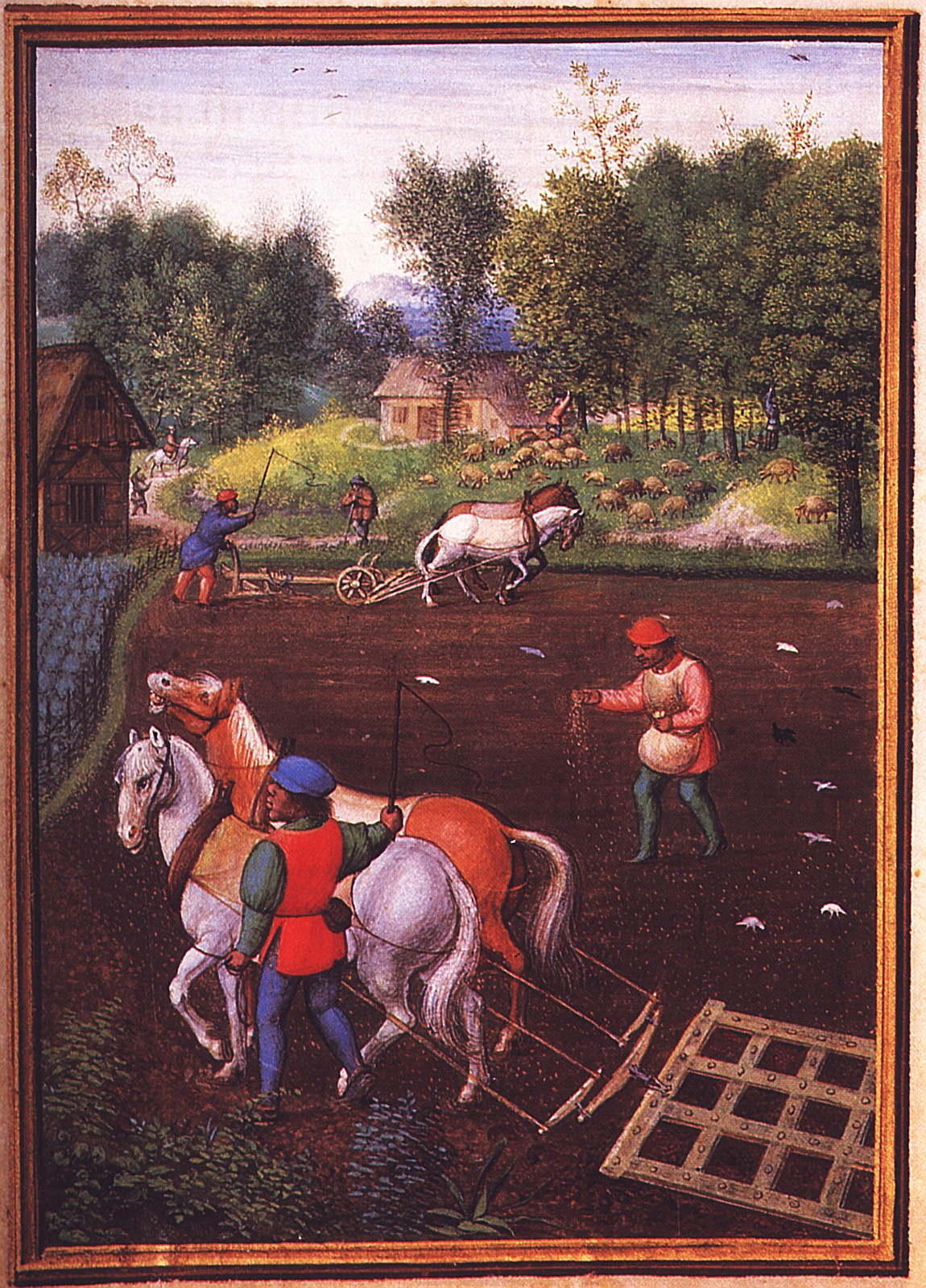|
Seed Drill
A seed drill is a device used in agriculture that sows seeds for crops by positioning them in the soil and burying them to a specific depth while being dragged by a tractor. This ensures that seeds will be distributed evenly. The seed drill sows the seeds at the proper seeding rate and depth, ensuring that the seeds are covered by soil. This saves them from being eaten by birds and animals, or being dried up due to exposure to the sun. With seed drill machines, seeds are distributed in rows; this allows plants to get sufficient sunlight, nutrients, and water from the soil. Before the introduction of the seed drill, most seeds were planted by hand broadcasting, an imprecise and wasteful process with a poor distribution of seeds and low productivity. Use of a seed drill can improve the ratio of crop yield (seeds harvested per seed planted) by as much as nine times. The use of seed drill saves time and labor. Some machines for metering out seeds for planting are called planters. ... [...More Info...] [...Related Items...] OR: [Wikipedia] [Google] [Baidu] |
Sowing Sowing is the process of planting seeds. An area or object that has had seeds planted in it will be described as a sowed or sown area. Plants which are usually sown Among the major field crops, oats, wheat, and rye are sown, grasses and legumes are seeded and maize and soybeans are planted. In planting, wider rows (generally 75 cm (30 in) or more) are used, and the intent is to have precise; even spacing between individual seeds in the row, various mechanisms have been devised to count out individual seeds at exact intervals. Depth of sowing In sowing, little if any soil is placed over the seeds, as seeds can be generally sown into the soil by maintaining a planting depth of about 2-3 times the size of the seed. Sowing types and patterns For hand sowing, several sowing types exist; these include: * Flat sowing * Ridge sowing * Wide |
